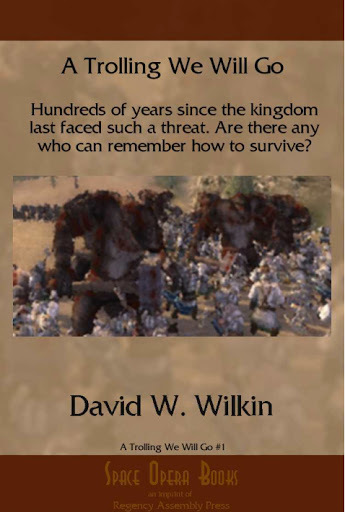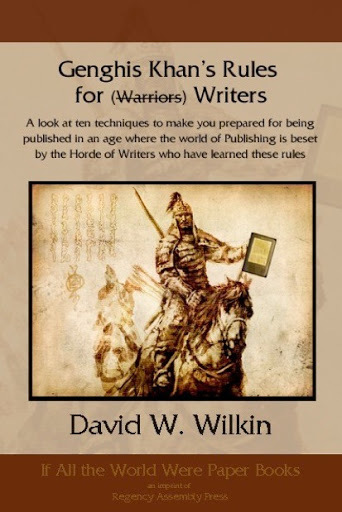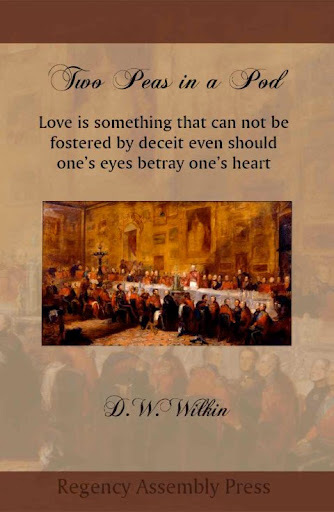D.W. Wilkin's Blog, page 4
January 5, 2017
Regency Personalities Series-John Clayton
Regency Personalities Series
In my attempts to provide us with the details of the Regency (I include those who were born before 1811 and who died after 1795), today I continue with one of the many period notables.
John Clayton
1728- 23 June 1800
John Clayton belonged to a family living at Bush Hill, Edmonton. He was the brother of Samuel Clayton of Old Park, Enfield, and uncle of Nicholas Clayton. He was brought up to be a doctor, and served his time with the surgeon Samuel Sharp; but he did not manage to advance in the medical profession, and took up painting.
The form of art he adopted was still life, especially fruit and flower pieces, painting both in oil and water-colours; he occasionally painted landscapes. Clayton exhibited in 1761 and the following years at the Free Society of Artists in the Strand, London, However by 1767 he had become a member of the Incorporated Society of Artists, and was one of those who signed the society’s roll declaration on its incorporation by charter in 1765. He continued to exhibit with them.
He lived in the Piazza, Covent Garden. In March 1769 a disastrous and extensive fire broke out which destroyed one side of the Piazza, and most of Clayton’s best pictures were destroyed in the fire. After this he seems to have given up art, and retired, having married, to his brother’s house at Enfield, where he devoted himself to gardening and music. He exhibited again in 1778. Clayton died on 23 June 1800 at Enfield, in his seventy-third year, leaving two sons and one daughter.


Space Opera Books Presents A Trolling We Will Go (Book #1)
A Trolling We Will Go
Not only do I write Regency and Romance, but I also have delved into Fantasy.
The Trolling series, (the first three are in print) is the story of a man, Humphrey. We meet him as he has left youth and become a man with a man’s responsibilities. We follow him in a series of stories that encompass the stages of life.
We see him when he starts his family, when he has older sons and the father son dynamic is tested. We see him when his children begin to marry and have children, and at the end of his life when those he has loved, and those who were his friends proceed him over the threshold into death.
All this while he serves a kingdom troubled by monsters. Troubles that he and his friends will learn to deal with and rectify.
It is now available in a variety of formats. For $.99 you can get this fantasy adventure.
Barnes and Noble for your Nook
The Valley Kingdom of Torahn had been at peace for fifty years since the Council of Twenty-One saw fit to dispense with their royal family.
The only Kingdom without a King on the west side of the continent. But late last year, something caused the Goblins in the Old Forest, Karasbahn to stir and act courageous.
Something that men can not remember seeing Goblins ever doing. What has gotten the Goblins in such a state?
Whatever it is, it can not be good news for Torahn. Or for Humphrey, a woodcutter for a small town, far from Karasbahn.
But part of the Kingdom’s militia, with no family or other exemptions. He is perfect to be sent to the Old Forest and find out what scares the Goblins that they have become fearless.
Feedback
If you have any commentary, thoughts, ideas about the book (especially if you buy it, read it and like it
January 4, 2017
Regency Personalities Series-Anthony Ashley-Cooper 7th Earl of Shaftesbury
Regency Personalities Series
In my attempts to provide us with the details of the Regency (I include those who were born before 1811 and who died after 1795), today I continue with one of the many period notables.
Anthony Ashley-Cooper 7th Earl of Shaftesbury
28 April 1801 – 1 October 1885
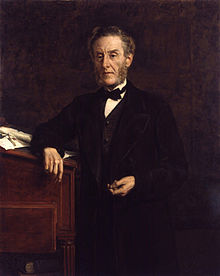
Anthony Ashley-Cooper
Anthony Ashley-Cooper 7th Earl of Shaftesbury, Lord Ashley, as he was styled until his father’s death in 1851, was educated at Manor House school in Chiswick (1812–1813), Harrow School (1813–1816) and Christ Church, Oxford, where he gained first class honours in classics in 1822, took his MA in 1832 and was appointed DCL in 1841.
Ashley’s early family life was loveless, a circumstance common among the British upper classes, and resembled in that respect the fictional childhood of Esther Summerson vividly narrated in the early chapters of Charles Dickens’s novel Bleak House. G.F.A Best in his biography Shaftesbury writes that: “Ashley grew up without any experience of parental love. He saw little of his parents, and when duty or necessity compelled them to take notice of him they were formal and frightening.”
This difficult childhood was softened by the affection he received from his housekeeper Maria Millis, and his sisters. Millis provided for Ashley a model of Christian love that would form the basis for much of his later social activism and philanthropic work, as Best explains: “What did touch him was the reality, and the homely practicality, of the love which her Christianity made her feel towards the unhappy child. She told him bible stories, she taught him a prayer.” Despite this powerful reprieve, school became another source of misery for the young Ashley, whose education at Manor House from 1808 to 1813 introduced a “more disgusting range of horrors”. Shaftesbury himself shuddered to recall those years, “The place was bad, wicked, filthy; and the treatment was starvation and cruelty.”
Ashley was elected as the Tory Member of Parliament for Woodstock (a pocket borough controlled by the Duke of Marlborough) in June 1826 and was a strong supporter of the Duke of Wellington. After George Canning replaced Lord Liverpool as Prime Minister, he offered Ashley a place in the new government, despite Ashley having been in the Commons for only five months. Ashley politely declined, writing in his diary that he believed that serving under Canning would be a betrayal of his allegiance to the Duke of Wellington and that he was not qualified for office. Before he had completed one year in the Commons, he had been appointed to three parliamentary committees and he received his fourth such appointment in June 1827, when he was appointed to the Select Committee On Pauper Lunatics in the County of Middlesex and on Lunatic Asylums.
In Lord Shaftesbury’s lifetime 1827, when Ashley was appointed to the Select Committee On Pauper Lunatics in the County of Middlesex and on Lunatic Asylums, the majority of lunatics in London were kept in madhouses owned by Dr Warburton. The Committee examined many witnesses concerning one of his madhouses in Bethnal Green, called the White House. Ashley visited this on the Committee’s behalf. The patients were chained up, slept naked on straw, and went to toilet in their beds. They were left chained from Saturday afternoon until Monday morning when they were cleared of the accumulated excrement. They were then washed down in freezing cold water and one towel was allotted to 160 people, with no soap. It was overcrowded and the meat provided was “that nasty thick hard muscle a dog could not eat”. The White House had been described as “a mere place for dying” rather than curing the insane and when the Committee asked Dr MacMichael whether he believed that “in the lunatic asylums in the neighbourhood of London any curative process is going on with regard to pauper patients”, he replied: “None at all”.
The Committee recommended that “legislative measures of a remedial character should be introduced at the earliest period at the next session”, and the establishment of a Board of Commissioners appointed by the Home Secretary possessing extensive powers of licensing, inspection and control. When in February 1828 Robert Gordon, Liberal MP for Cricklade, introduced a bill to put these recommendations into law, Ashley seconded this and delivered his maiden speech in support of the Bill. He wrote in his diary: “So, by God’s blessing, my first effort has been for the advance of human happiness. May I improve hourly! Fright almost deprived me of recollection but again thank Heaven, I did not sit down quite a presumptuous idiot”. Ashley was also involved in framing the County Lunatic Asylums (England) Act 1828 and the Madhouses Act 1828. Through these Acts fifteen commissioners were appointed for the London area and given extensive powers of licensing and inspection, one of the commissioners being Ashley.
In July 1845 Ashley sponsored two Lunacy Acts, ‘For the Regulation of lunatic Asylums’ and ‘For the better Care and Treatment of Lunatics in England and Wales’. They originated in the Report of the Commissioners in Lunacy which he had commended to Parliament the year before. These Acts consolidated and amended previous lunacy laws, providing better record keeping and more strict certification regulations to ensure patients against unwarranted detention. They also ordered, instead of merely permitting, the construction of country lunatic asylums with and establishing an ongoing Lunacy Commission with Ashley as its chairman. In support of these measures, Ashley gave a speech in which he claimed that although since 1828 there had been an improvement, more still needed to be done. He cited the case of a Welsh lunatic girl, Mary Jones, who had for more than a decade been locked in a tiny loft with one boarded-up window with little air and no light. The room was extremely filthy and was filled with an intolerable smell. She could only squat in a bent position in the room and this had caused her to become deformed.
In early 1858 a Select Committee was appointed over concerns that sane persons were detained in lunatic asylums. Lord Shaftesbury (as Ashley had become upon his father’s death in 1851) was the chief witness and opposed the suggestion that the certification of insanity be made more difficult and that early treatment of insanity was essential if there was to be any prospect of a cure. He claimed that only one or two people in his time dealing with lunacy had been detained in an asylum without sufficient grounds and that commissioners should be granted more not fewer powers. The Committee’s Report endorsed all of Shaftesbury’s recommendations except for one: that a magistrate’s signature on a certificate of lunacy be made compulsory. This was not put into law chiefly due to Shaftesbury’s opposition to it. The Report also agreed with Shaftesbury that unwarranted detentions were “extremely rare”.
In July 1877 Shaftesbury gave evidence before the Select Committee on the Lunacy Laws, which had been appointed in February over concerns that it was too easy for sane persons to be detained in asylums. Shaftesbury feared that because of his advanced age he would be taken over by forgetfulness whilst given evidence and was greatly stressed in the months leading up to his giving evidence: “Shall fifty years of toil, anxiety and prayer, crowned by marvellous and unlooked-for success, bring me in the end only sorrow and disgrace?” When “the hour of trial” arrived Shaftesbury defended the Lunacy Commission and claimed he was now the only person alive who could speak with personal knowledge of the state of care of lunatics before the Lunacy Commission was established in 1828. It had been “a state of things such as would pass all belief”. In the Committee’s Report, the members of the Committee agreed with Shaftesbury’s evidence on all points.
In 1884 the husband of Mrs Georgina Weldon tried to have her detained in a lunatic asylum because she believed that her pug dog had a soul and that the spirit of her dead mother had entered into her pet rabbit. She commenced legal action against Shaftesbury and other lunacy commissioners although they failed. In May Shaftesbury spoke in the Lords against a motion declaring the lunacy laws unsatisfactory but the motion passed Parliament. The Lord Chancellor Selborne supported a Lunacy Law Amendment Bill and Shaftesbury wanted to resign from the Lunacy Commission as he believed he was honour bound not to oppose a Bill supported by the Lord Chancellor. However Selborne implored him not to resign so Shaftesbury refrained. However, when the Bill was introduced and it contained the provision which made it compulsory for a certificate of lunacy to be signed by a magistrate or a judge, he resigned. The government fell, however, and the Bill was withdrawn and Shaftesbury resumed his chairmanship of the Lunacy Commission.
Shaftesbury’s work in improving the care of the insane remains one of his most important, though less well known, of his achievements. He wrote: “Beyond the circle of my own Commissioners and the lunatics that I visit, not a soul, in great or small life, not even my associates in my works of philanthropy, has any notion of the years of toil and care that, under God, I have bestowed on this melancholy and awful question”.
In March 1833 Ashley introduced the Ten Hours Act 1833 into the Commons, which provided that children working in the cotton and woollen industries must be aged nine or above; no person under the age of eighteen was to work more than ten hours a day or eight hours on a Saturday; and no one under twenty-five was to work nights. However the Whig government, by a majority of 145, amended this to substitute “thirteen” in place of “eighteen” and the Act as it passed ensured that no child under thirteen worked more than nine hours, insisted they should go to school, and appointed inspectors to enforce the law.
In June 1836 another Ten Hours act was introduced into the Commons and although Ashley considered this Bill ill-timed, he supported it. In July one member of the Lancashire committees set up to support the Bill wrote that: “If there was one man in England more devoted to the interests of the factory people than another, it was Lord Ashley. They might always rely on him as a ready, steadfast and willing friend”. In July 1837 he accused the government of ignoring the breaches of the 1833 Act and moved the resolution that the House regretted the regulation of the working hours of children had. been found to be unsatisfactory. It was lost by fifteen votes.
The text of A Narrative of the Experience and Sufferings of William Dodd a Factory Cripple was sent to Lord Astley and with his support was published in 1840. Astley employed William Dodd at 45 shillings a week and he wrote “The Factory System: Illustrated” to describe the conditions of working children in textile manufacture. This was published in 1842. These books were attacked by John Bright in parliament who said that he had evidence that the books described Dodd’s mistreatment but were in fact driven by Dodd’s ingratitude as a disgruntled employee. Ashley sacked Dodd who emigrated to America.
In 1842 Ashley wrote twice to the Prime Minister, Robert Peel, to urge the government to support a new Factory Act. Peel wrote in reply that he would not support one and Ashley wrote to the Short Time Committees of Chesire, Lancashire and Yorkshire who desired a Ten Hours Act:
Though painfully disappointed, I am not disheartened, nor am I at a loss either what course to take, or what advice to give. I shall persevere unto my last hour, and so must you; we must exhaust every legitimate means that the Constitution afford, in petitions to Parliament, in public meetings, and in friendly conferences with your employers; but you must infringe no law, and offend no proprieties; we must all work together as sensible men, who will one day give an account of their motives and actions; if this course is approved, no consideration shall detach me from your cause; if not, you must elect another advocate. I know that, in resolving on this step, I exclude myself altogether from the tenure of office; I rejoice in the sacrifice, happy to devote the remainder of my days, be they many or be they few, as God in His wisdom shall determine, to an effort, however laborious, to ameliorate your moral and social condition.
In March 1844 Ashley moved an amendment to a Factory Bill limiting the working hours of adolescents to ten hours after Sir James Graham had introduced a Bill aiming to limit their working hours to twelve hours. Ashley’s amendment was passed by eight votes, the first time the Commons had approved of the Ten Hour principle. However, in a later vote his amendment was defeated by seven votes and the Bill was withdrawn. Later that month Graham introduced another Bill which again would limit the employment of adolescents to twelve hours. Ashley supported this Bill except that he wanted ten hours not twelve as the limit. In May he moved an amendment to limit the hours worked to ten hours but this was lost by 138 votes.
In 1846, whilst he was out of Parliament, Ashley strongly supported John Fielden’s Ten Hours Bill, which was lost by ten votes. In January 1847 Fielden reintroduced his Bill and it finally passed through Parliament to become the Ten Hours Act.
Ashley introduced the Mines and Collieries Act 1842 in Parliament to outlaw the employment of women and children underground in coal mines. He made a speech in support of the Act and the Prince Consort wrote to him afterwards, sending him the “best wishes for your total success”. At the end of his speech, his opponent on the Ten Hours issue, Cobden, walked over to Ashley and said: “You know how opposed I have been to your views; but I don’t think I have ever been put into such a frame of mind in the whole course of my life as I have been by your speech”.
Ashley was a strong supporter of prohibiting the employment of boys as chimney sweeps. Many climbing boys were illegitimate who had been sold by their parents. They suffered from scorched and lacerated skin, their eyes and throats filled with soot, with the danger of suffocation and their occupational disease—cancer of the scrotum. In 1840 a Bill was introduced into the Commons outlawing the employment of boys as chimney sweeps, and strongly supported by Ashley. Despite being enforced in London, elsewhere the Act did not stop the employment of child chimney sweeps and this led to the foundation of the Climbing-Boys’ Society with Ashley as its chairman. In 1851, 1853 and 1855 Shaftesbury introduced Bills into Parliament to deal with the ongoing use of boy chimney sweeps but these were all defeated. He succeeded in passing the Chimney Sweepers Regulation Act 1864 but like its predecessors it remained ineffectual. Shaftesbury finally persuaded Parliament to pass the Chimney Sweepers Act 1875 which ensured the annual licensing of chimney sweeps and the enforcement of the law by the police. This finally eradicated the employment of boys as chimney sweeps.
After Shaftesbury discovered that a boy chimney sweep was living behind his house in Brock Street, London, he rescued the child and sent him to “the Union School at Norwood Hill, where, under God’s blessing and special merciful grace, he will be trained in the knowledge and love and faith of our common Saviour”.
In 1844 Ashley became president of the Ragged School Union that promoted ragged schools. These schools were for poor children and sprang up from volunteers. Ashley wrote that “If the Ragged School system were to fail I should not die in the course of nature, I should die of a broken heart”.
Shaftesbury was a leading figure within 19th-century evangelical Anglicanism. Shaftesbury was President of the British and Foreign Bible Society (BFBS) from 1851 until his death in 1885. He wrote, of the Bible Society, “Of all Societies this is nearest to my heart… Bible Society has always been a watchword in our house.” He was also president of the Evangelical Alliance for some time.
Shaftesbury was also a student of Edward Bickersteth and together they became prominent advocates of Christian Zionism in Britain. Shaftesbury was an early proponent of the Restoration of the Jews to the Holy Land, providing the first proposal by a major politician to resettle Jews in Palestine. The conquest of Greater Syria in 1831 by Muhammad Ali of Egypt changed the conditions under which European power politics operated in the Near East. As a consequence of that shift, Shaftesbury was able to help persuade Foreign Minister Palmerston to send a British consul to Jerusalem in 1838. A committed Christian and a loyal Englishman, Shaftesbury argued for a Jewish return because of what he saw as the political and economic advantages to England and because he believed that it was God’s will. In January 1839, Shaftesbury published an article in the Quarterly Review, which although initially commenting on the 1838 Letters on Egypt, Edom and the Holy Land (1838) by Lord Lindsay, provided the first proposal by a major politician to resettle Jews in Palestine:
The soil and climate of Palestine are singularly adapted to the growth of produce required for the exigencies of Great Britain; the finest cotton may be obtained in almost unlimited abundance; silk and madder are the staple of the country, and olive oil is now, as it ever was, the very fatness of the land. Capital and skill are alone required: the presence of a British officer, and the increased security of property which his presence will confer, may invite them from these islands to the cultivation of Palestine; and the Jews’, who will betake themselves to agriculture in no other land, having found, in the English consul, a mediator between their people and the Pacha, will probably return in yet greater numbers, and become once more the husbandmen of Judaea and Galilee.
The lead-up to the Crimean War (1854), like the military expansionism of Muhammad Ali two decades earlier, signalled an opening for realignments in the Near East. In July 1853, Shaftesbury wrote to Prime Minister Aberdeen that Greater Syria was “a country without a nation” in need of “a nation without a country… Is there such a thing? To be sure there is, the ancient and rightful lords of the soil, the Jews!” In his diary that year he wrote “these vast and fertile regions will soon be without a ruler, without a known and acknowledged power to claim dominion. The territory must be assigned to some one or other… There is a country without a nation; and God now in his wisdom and mercy, directs us to a nation without a country.” This is commonly cited as an early use of the phrase, “A land without a people for a people without a land” by which Shaftesbury was echoing another British proponent of the restoration of the Jews to Israel, (Dr Alexander Keith.)
Shaftesbury served as the first president of the Society for the Suppression of the Opium Trade – a lobbying group opposed to the Anglo-Asian opium trade. The Society was formed by Quaker businessmen in 1874, and Shaftesbury was president from 1880 until his death. The Society’s efforts eventually led to the creation of the investigative Royal Commission on Opium.
The Shaftesbury Memorial in Piccadilly Circus, London, erected in 1893, was designed to commemorate his philanthropic works. The Memorial is crowned by Alfred Gilbert’s aluminium statue of Anteros as a nude, butterfly-winged archer. This is officially titled The Angel of Christian Charity, but has become popularly, if mistakenly, known as Eros. It appears on the masthead of the Evening Standard.
Lord Shaftesbury is honoured together with William Wilberforce on the liturgical calendar of the Episcopal Church on 30 July. Lord Shaftesbury was a member of the Canterbury Association, as were two of Wilberforce’s sons, Samuel and Robert. Lord Ashley joined on 27 March 1848.
Lord Shaftesbury, then Lord Ashley, married Lady Emily Caroline Catherine Frances Cowper (died 15 October 1872), daughter of Peter Cowper, 5th Earl Cowper and Emily Lamb, Countess Cowper; Emily is likely in fact to have been the natural daughter of Lord Palmerston (later her official stepfather), on 10 June 1830. This marriage, which proved a happy and fruitful one, produced ten children, as cited in “The Seventh Earl” by Grace Irwin. It also provided invaluable political connections for Ashley; his wife’s maternal uncle was Lord Melbourne and her stepfather (and supposed biological father) Lord Palmerston, both Prime Ministers.
The children, who mostly suffered various degrees of ill-health, were:
Anthony Ashley-Cooper, 8th Earl of Shaftesbury (27 June 1831 – 13 April 1886), ancestor of all subsequent earls. He proved to be a disappointing heir apparent, constantly running up debts with his extravagant wife Harriet, born Lady Harriet Chichester.
Hon. (Anthony) Francis Henry Ashley-Cooper, second son (b. 13 March 1833 – 13 May 1849
Hon. (Anthony) Maurice William Ashley-Cooper, third son (22 July 1835 – 19 August 1855), died aged 20, after several years of illness.
Rt. Hon. Evelyn Melbourne Ashley (24 July 1836 – 15 November 1907), married 1stly 28 July 1866 Sybella Charlotte Farquhar (ca. 1846 – 31 August 1886), daughter of Sir Walter Rockcliffe Farquhar, 3rd Bt. by his wife Lady Mary Octavia Somerset, a daughter of the Duke of Beaufort and had one son Wilfred William Ashley, and one daughter. His granddaughter was Hon. Edwina Ashley, later Lady Mountbatten (1901–1960), whose two daughters Patricia, Countess Mountbatten of Burma (b. 1924) and Lady Pamela Hicks (b. 1929) are still living as of 2013. Evelyn Ashley left several other descendants via his daughter and Edwina’s younger sister. Evelyn Ashley married 2ndly 30 June 1891 Lady Alice Elizabeth Cole (4 February 1853 – 25 August 1931), daughter of William Willoughby Cole, 3rd Earl of Enniskillen by his 1st wife Jane Casamajor, no issue. The Rt Hon Evelyn Melbourne Ashley died 15 November 1907.
Lady Victoria Elizabeth Ashley, later Lady Templemore (23 September 1837 – 15 February 1927), married 8 January 1873 (aged 35) St George’s, Hanover Square, London Harry Chichester, 2nd Baron Templemore (4 June 1821 – 10 June 1906), son of Arthur Chichester, 1st Baron Templemore and Lady Augusta Paget, and had issue.
Hon (Anthony) Lionel George Ashley-Cooper (b. 7 September 1838 – 1914). He md 12 December 1868 Frances Elizabeth Leigh “Fanny (d. 12 August 1875), daughter of Capel Hanbury Leigh; apparently had no issue.
Lady Mary Charlotte Ashley-Cooper, second daughter (25 July 1842 – 3 September 1861.
Lady Constance Emily Ashley-Cooper, third daughter, or “Conty” (29 November 1845 – 16 December 1872 or 1871 of lung disease)
Lady Edith Florence Ashley-Cooper, fourth daughter (1 February 1847 – 25 November 1913)
Hon. (Anthony) Cecil Ashley-Cooper, sixth son and tenth and youngest child (8 August 1849 – 23 September 1932); apparently died unmarried.


Rules for better writing from Genghis Khan
The Rules for Writers
Those who follow me for a long time know that I also write in other fields aside from Regency Romance and the historical novels I do.
A little while ago, before the end of 2011 and the 2011 NaNoWriMo, (where I wrote the first draft of another Regency) I started work on a project about writing.
The premise was what one should think about when starting and working on a project. I came up with 10 rules to follow in a quest to become a writer and tackle that novel.
Here are The 10 Rules:
1) Read like a writer
2) Have a good story
3) Your work will be Thematic
4) Plot: The seven deadly ones
5) Characters will carry your tale, near and far
6) Words are your warriors
7) Stories are structured
8) All tales building to a Crescendo
9) Genghis edits history, shouldn’t you as well
10) Act like a writer
So it is now released. For $4.99 you can get this treatise on honing your skills.
Barnes and Noble for your Nook
Genghis Khan came from the Steppes of Mongolia, a family torn apart by neighboring tribes, to unite those tribes, or defeat them, and then conquer the greater part of the known world. His heirs would continue his conquest right to the edge of western society. The world feared the Mongols, and Genghis. Now, you can benefit, as a writer from the lessons he has to impart on how, with the changing world of publishing, you can perfect your work and write not only good material for this new age of book publishing. But can write great work for this new age. 10 simple lessons, and you will be on your way to conquering the bookshelves of the 21st century. This short book will have you learning all you really need to know to elevate your writing to the next level. These simple lessons will start you on the road to better writing as a member of the Horde in no time.
Feedback
If you have any commentary, thoughts, ideas about the book (especially if you buy it, read it and like it
January 3, 2017
Regency Personalities Series-General Richard Airey 1st Baron Airey
Regency Personalities Series
In my attempts to provide us with the details of the Regency (I include those who were born before 1811 and who died after 1795), today I continue with one of the many period notables.
General Richard Airey 1st Baron Airey
1803 – 14 September 1881
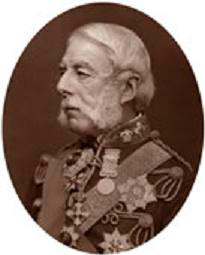
Richard Airey
Richard Airey 1st Baron Airey was born at Newcastle upon Tyne, Northumberland, Airey was the eldest son of Lieutenant General Sir George Airey and his wife Catherine Talbot, daughter of Richard Talbot and Margaret Talbot, 1st Baroness Talbot of Malahide.
Airey was educated at the Royal Military College, Sandhurst and entered the army as an ensign of the 34th (Cumberland) Regiment of Foot in 1821. He became captain in 1825, and served as aide-de-camp on the staff of Sir Frederick Adam in the Ionian Islands (1827–1830) and on that of Lord Aylmer in North America (1830–1832). In 1838 Airey, then a lieutenant colonel, went to the Royal Horse Guards as assistant adjutant-general, where in 1852 he became Military Secretary to the commander-in-chief, Lord Hardinge.
In 1854 he was given a brigade command in the army sent out to the East, from which, however, he was rapidly transferred to the onerous and difficult post of Quartermaster-General under Lord Raglan, in which capacity he served through the campaign in the Crimean War. He was reported upon most favorably by his superiors, Lord Raglan and Sir James Simpson and for his performance was made a major general in December 1854 and was awarded a Knight Commander of the Order of the Bath (KCB). Following Raglan’s instructions, Airey issued the fateful order for the Charge of the Light Brigade. He was also criticised for incompetence in the provision of supplies and transport. Airey demanded an inquiry on his return to England, which took place under Lord Seaton and which cleared him completely, but he never recovered from the effects of persecution from his critics.
In 1855 he returned to London to become Quartermaster-General to the Forces at home. In 1862 he was promoted to lieutenant general, and from 1865 to 1870 he was Governor of Gibraltar, being appointed a Knight Grand Cross of the Order of the Bath (GCB) in 1867. In 1870 he became Adjutant-General to the Forces at headquarters, and in the following year attained the full rank of general. On 29 November 1876, on his retirement, he was elevated to the Peerage of the United Kingdom as Baron Airey, of Killingworth in the County of Northumberland. During 1879–1880 he
In 1838, he married his cousin, Harriet Mary Everard Talbot, daughter of James Talbot, 3rd Baron Talbot of Malahide. Their only daughter, Hon. Katherine Margaret Airey (d. 22 May 1896) married Sir Geers Cottrell, 3rd Baronet. Airey died at the house of Lord Wolseley, at Leatherhead, Surrey, when his title became extinct.


An Unofficial Guide to how to win the Scenarios of Rollercoaster Tycoon 3
An Unofficial Guide to how to win the Scenarios of Rollercoaster Tycoon 3
I have been a fan of this series of computer games since early in its release of the very first game. That game was done by one programmer, Chris Sawyer, and it was the first I recall of an internet hit. Websites were put up in dedication to this game where people showed off their creations, based on real amusement parks. These sites were funded by individuals, an expense that was not necessarily as cheap then as it is now. Nor as easy to program then as it might be to build a web page now.
Prima Books released game guides for each iteration of the game, Rollercoaster Tycoon 1, Rollercoaster Tycoon 2 and Rollercoaster Tycoon 3 (RCT3) but not for the expansion sets. And unlike the first two works, the third guide was riddle with incorrect solutions. As I played the game that frustrated me. And I took to the forums that Atari, the game publisher hosted to see if I could find a way to solve those scenarios that the Prima Guide had written up in error. Not finding any good advice, I created my own for the scenarios that the “Official” Guide had gotten wrong.
Solutions that if you followed my advice you would win the scenario and move on. But if you followed the
“Official” version you would fail and not be able to complete the game. My style and format being different than the folks at Prima, I continued for all the Scenarios that they had gotten right as well, though my solutions cut to the chase and got you to the winner’s circle more quickly, more directly.
My contributions to the “Official” Forum, got me a place as a playtester for both expansions to the game, Soaked and Wild. And for each of these games, I wrote the guides during the play testing phase so all the play testers could solve the scenarios, and then once again after the official release to make changes in the formula in case our aiding to perfect the game had changed matters. For this, Atari and Frontier (the actual programmers of the game) placed me within the game itself.
And for the longest time, these have been free at the “Official” Forums, as well as my own website dedicated to the game. But a short time ago, I noticed that Atari, after one of its bankruptcies had deleted their forums. So now I am releasing the Guide for one and all. I have added new material and it is near 100 pages, just for the first of the three games. It is available for the Kindle at present for $2.99.
(Click on the picture to purchase)
Not only are all 18 Scenarios covered, but there are sections covering every Cheat Code, Custom Scenery, the famous Small Park Competition, the Advanced Fireworks Editor, the Flying Camera Route Editor which are all the techniques every amusement park designer needs to make a fantastic park in Rollercoaster Tycoon 3.
Scenarios for RCT 3
1) Vanilla Hills
2) Goldrush
3) Checkered Flag
4) Box Office
5) Fright Night
6) Go With The Flow
7) Broom Lake
8) Valley of Kings
9) Gunslinger
10) Ghost Town
11) National Treasure
12) New Blood
13) Island Hopping
14) Cosmic Crags
15) La La Land
16) Mountain Rescue
17) The Money Pit
18) Paradise Island


January 2, 2017
Regency Personalities Series-Sir Francis William Forbes
Regency Personalities Series
In my attempts to provide us with the details of the Regency (I include those who were born before 1811 and who died after 1795), today I continue with one of the many period notables.
Sir Francis William Forbes
1784 – 8 November 1841
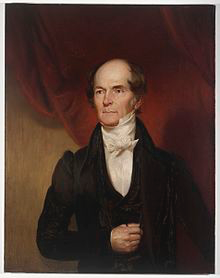
Francis William Forbes
Sir Francis William Forbes was born and educated in Bermuda, the son of Dr. Francis Forbes M.D. and his wife Mary, née Tucker. At the age of 19 he travelled to London, England to enter Lincoln’s Inn. He was called to the Bar in 1812 and became a Crown Law Officer in Bermuda and married Amelia Sophia Grant in 1813, returning to England in 1815.
In 1816 he was invited to be Chief Justice of Newfoundland, and was sworn in at St. John’s in July, 1816. While in Newfoundland, he severely curtailed the powers of the Fishing Admirals. In 1820, he wrote the lyrics of the song “The Banks of Newfoundland”.
In 1822, he was appointed to be Chief Justice of the Supreme Court of New South Wales, to oversee the reform of the administration of the legal system in the colony, following the inquiry into the colony’s affairs by commissioner John Bigge. Before departing for Australia, he helped draft the New South Wales Act 1823 (4 Geo. IV c. 96) which, along with the Charter of Justice issued under it on 13 October 1823, replaced the legal tribunals of convict days with a Supreme Court possessing comprehensive jurisdiction. Under the new system, Forbes was not only the sole judge, subject only to the appellate power of the Governor, but also an ex officio member of the Executive and Legislative Councils, and all colonial legislation had to be certified by him.
Forbes arrived in Sydney in March 1824 and the Court commenced on 17 May 1824. The governor, Sir Thomas Brisbane, was impressed by Forbes, and in his dispatches of 1 July and 12 August 1824 reported that “since the arrival of the chief justice the state of the Colony has assumed a new tone”. Forbes had no difficulties with Brisbane, but it was not long before he came into conflict with the new governor, Sir Ralph Darling. It was proposed to pass acts for the purpose of restraining the liberty of the press, and Forbes refused to certify them as he considered them repugnant to the laws of England. He pointed out how necessary it was to go carefully, as in the then conditions of the colony the people looked upon the Supreme Court as their protection against absolute power. “I had been appointed by Parliament”, said Forbes, “to see that the laws of the Empire were not encroached upon … I refused to certify the Governor’s Bills because I thought them repugnant to law … What legal right could the Governor claim to press me further?”. After great discussion the issue went to the Colonial Office, whose legal advisors were of opinion that Forbes was right in refusing to certify the act for licensing newspapers. They thought he had been wrong with regard to the newspaper stamp act but, as there was no reason to doubt that he had formed his opinion honestly, he had executed his duty in acting upon it. Forbes’s workload had been and continued to be heavy, his controversy with Darling was harassing, and his health suffered.
Forbes suffered serious bouts of illness from 1826. In May 1836 he returned to England for a year’s leave. In 1837 he retired from his post and was honoured with a knighthood. He died at Leitrim Lodge, his home in Newtown, New South Wales, on 8 November 1841.
The Francis Forbes Society for Australian Legal History, based in Sydney, is named after him.
Mount Forbes in Queensland is named after him, but the name originally referred to the mountain now known as Mount Walker, Queensland while the Mount Forbes name is now assigned to an adjacent locality.


Two Peas in A Pod, A Regency Romance
Two Peas in a Pod has now passed the exclusivity to Amazon test and is available in wider release, electronically (digitally) for other readers now. We sold a few copies on Amazon but nothing to warrant an exclusivity period. Amazon is too big and too full of itself.
Two Peas in a Pod is still available as a Trade paperback click here to order Regency Assembly Press.
$3.99 for an electronic copy. The Trade Paperback, due to publishing costs and the cut that Amazon takes continue to see a Trade Paperback costing $15.99 (The much hyped royalties that we writers are supposed to get is nowhere near what the news reports say. Most of that price is taken by Amazon.)
iBookstore (These are my books
and still at Amazon
Here is a picture, which of course you can click on to go fetch the book:
Love is something that can not be fostered by deceit even should one’s eyes betray one’s heart.
Two brothers that are so close in appearance that only a handful have ever been able to tell them apart. The Earl of Kent, Percival Francis Michael Coldwell is only older than his brother, Peregrine Maxim Frederick Coldwell by 17 minutes. They may have looked as each other, but that masked how they were truthfully quite opposite to one another.
For Percy, his personality was one that he was quite comfortable with and more than happy to let Perry be of a serious nature. At least until he met Veronica Hamilton, the daughter of Baron Hamilton of Leith. She was only interested in a man who was serious.
Once more, Peregrine is obliged to help his older brother by taking his place, that the Earl may woo the young lady who has captured his heart. That is, until there is one who captures Peregrine’s heart as well.
There is a visual guide to Two Peas in a Pod 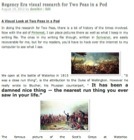 as well at Pinterest and a blog post here.
as well at Pinterest and a blog post here.


January 1, 2017
Regency Personalities Series-Vicesimus Knox
Regency Personalities Series
In my attempts to provide us with the details of the Regency (I include those who were born before 1811 and who died after 1795), today I continue with one of the many period notables.
Vicesimus Knox
December 8, 1752 – 1821
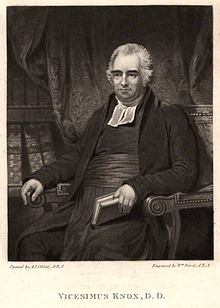
Vicesimus Knox
Vicesimus Knox was born at Newington Green, Middlesex, the son of Vicesimus Knox (1729–1780), a cleric and schoolmaster, and his wife Ann Wall, daughter of Devereux Wall. He was educated at St John’s College, Oxford, matriculating in 1771 graduating in 1775. Meanwhile, his father became headmaster of Tonbridge School in 1772. Knox became a Fellow of his college, and was ordained by Robert Lowth, becoming deacon in 1775 and priest in 1776.
Knox replaced his father, who was in poor health, as headmaster of Tonbridge School in 1778. He was successful in raising the number of pupils, from around 20 to around 80. Among Knox’s students were Charles Girdlestone and John Mitford.
During the 1790s Knox was critical of British foreign policy, towards France and Poland, in articles written for the Morning Chronicle. The pupil numbers at the school fell back again, after his unpopular views became known.
Knox accumulated some livings: Shipborne (1800, a chapelry, as bequest from William Holles Vane, 2nd Viscount Vane), Ramsden Crays (1801), and Runwell (1807). But he did not become vicar of Tonbridge when the incumbent Henry Harpur died in 1790, the advowson passing out of the Vane family (to David Papillon), and John Rawstorn Papillon being appointed. Theophilus Lindsey had an account from Henry Austen of West Wickham of Knox acting as stand-in after Harpur’s death, as a showy preacher who made pointed remarks about Unitarians that Austen took personally.
As an essayist Knox wrote extensively on morals and literature, and as a minister he preached often on behalf of philanthropic causes and against war.
Knox argued that
“If the Christian religion in all its purity, and in its full force, were suffered to prevail universally, the sword of offensive war must be sheathed for ever, and the din of arms would at last be silenced in perpetual peace”.
and that
“The total abolition of war, and the establishment of perpetual and universal peace, appear to me to be of more consequence than any thing ever achieved, or even attempted, by mere mortal man, since the creation”.
Knox’s Essays Moral and Literary, Volume II, contains Essay XVIII “On Novel Reading”, which begins “If it is true, that the present age is more corrupt than the preceding, the great multiplication of Novels probably contributes to its degeneracy.” He considered that contact with Gil Blas or Devil Upon Two Sticks, picaresque novels by Alain-René Lesage, could cause a schoolboy to lose the taste for Latin classics.
The sentimental novel was explicitly linked by Knox to solitary vice. An early critic of Laurence Sterne, he took issue with the morality of A Sentimental Journey Through France and Italy. He complained that Sterne and Elizabeth Draper, of Journal to Eliza, had too many imitators. Winter Evenings has a story of Belinda who was too fond of “pathetic” novels. Knox approved of travel writing.
Knox wrote:
Essays Moral and Literary, anon. London
Liberal Education, or a Practical Treatise on the Methods of acquiring Useful and Polite Learning, Lond.
Elegant Extracts, or Useful and Entertaining Passages in Prose, selected for the improvement of Scholars at Classical and other Schools in the Art of Speaking, in Reading, Thinking, Composing, and in the Conduct of Life, anon. Lond.
Winter Evenings, or Lucubrations on Life and Letters, anon. Lond.
Elegant Extracts, or Useful and Entertaining Pieces of Poetry, selected for the improvement of Youth, anon. London 1789; other editions, anon. Lond.
The Poetical Epitome, or Elegant Extracts abridged, anon. London
Elegant Epistles, or a copious Collection of Familiar and Amusing Letters, selected for the improvement of young Persons, and for general Entertainment, Lond.
Family Lectures, or Domestic Divinity; being a copious Collection of Sermons, selected from … Divines of the present century, for the Use of Schools, London
Sermons, chiefly intended to promote Faith, Hope, and Charity, London 1792; 2nd edition, corrected, London 1793.
Personal Nobility, or Letters to a young Nobleman on the Conduct of his Studies and the Dignity of the Peerage, anon. Lond.
Antipolemus, or the Plea of Reason, Religion, and Humanity against War; a Fragment, translated from Erasmus and addressed to Aggressors, anon. Lond.
The Spirit of Despotism … London, printed in the year 1795; Philadelphia, reprinted … Nov. 28, mdccxcv;
Christian Philosophy, or an Attempt to Display the Evidence and Excellence of Revealed Religion, Lond.
Considerations on the Nature and Efficacy of the Lord’s Supper, Lond. 1799; 2nd edition, abridged, Lond.
Remarks on the tendency of certain Clauses in a Bill now pending in Parliament to degrade Grammar Schools. With cursory Strictures on the national importance of preserving inviolate the Classical discipline prescribed by their Founders, London
The Works of Vicesimus Knox, D.D.: With a Biographical Preface
Also single sermons and anonymously issued editions of Juvenal and Persius (1784) and of Catullus (1784; reprinted 1824). Thomas De Quincey called Knox “a writer now entirely forgotten” in a footnote to his Philosophy of Herodotus (1842).
Knox in 1778 married Mary Miller (died 1809). Their children were:
Holles Josiah, died young
Vicesimus (d. 1855), a barrister, married in 1845 Lucy, third daughter of Ralph Bernal; after his death she married Seymour Tremenheere
Thomas (1784–1843), who succeeded his father as headmaster of Tonbridge School in 1812
Sarah.


RAP (Regency Assembly Press) in need of Beta-Readers
Regency Assembly
Press
is looking for
Beta Readers
One novel is ready for Beta Reading
We have a continuation of Pride and Prejudice with Ms Caroline Bingley and her fortune at stake:
Do we think that Mr Hurst married his Bingley Bride without incentive? It is highly probable that Caroline Bingley, even though she has a sharp, acerbic tongue, still is in possession of a fortune and an astute fortune hunter who deciphers this may soon be on the road to, if not a happy marriage, one with financial security.
Please respond or send an email if you are interested



